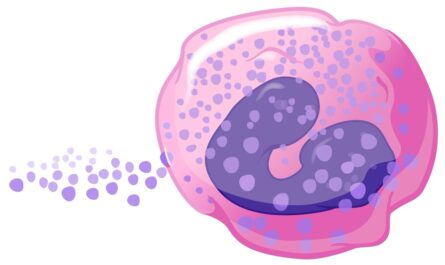What is Hereditary Angioedema?
Hereditary angioedema (HAE) is a rare genetic condition characterized by recurrent episodes of swelling (edema) in the skin and mucous membranes throughout the body. These swelling episodes are the result of decreased levels or function of the C1 inhibitor protein in the body, which regulates certain biochemical pathways involved in inflammation and fluid balance. Without normal C1 inhibitor function, levels of bradykinin rise abnormally and trigger inflammation and leaking of fluid from local blood vessels into surrounding tissues.
Genetics and Inheritance Pattern
Hereditary Angioedema is inherited in an autosomal dominant pattern, meaning only one copy of the affected gene is needed to have the condition. Approximately 80-85% of HAE cases are caused by mutations in the C1INH gene which provides instructions for making the C1 inhibitor protein. The other 15-20% of HAE cases are considered non-hereditary or acquired due to autoimmune disorders or other medical conditions that damage the function of C1 inhibitor. The condition may appear for the first time in a family (spontaneous mutation) or be passed down from an affected parent.
Common Symptoms
The key symptoms of hereditary angioedema are recurring episodes of localized swelling that develop rapidly (within hours) and last for prolonged periods from 2-5 days if not treated. Common areas of swelling during attacks include:
– Face – eyelids, lips, tongue
– Abdomen – intense pain, nausea, vomiting
– Upper airway – larynx or pharynx swelling can cause breathing difficulty
– Extremities – hands, feet, genitals
Attacks are usually preceded by mild tingling or itching at the site that will swell. They vary in frequency from several times a month to years between episodes in some individuals. Swelling is painless but affected areas may feel tight.
Accurate Diagnosis
There is no single diagnostic laboratory test for HAE. Diagnosis involves several factors:
– Detailed family history – the presence of unexplained swelling episodes in close relatives
– Physical exam during or after an attack to view localized swelling
– Blood tests to check C4 levels which are typically low between attacks
– Screening for C1 inhibitor deficiency or dysfunction
– Genetic testing of the C1INH gene if a mutation is suspected
Prompt diagnosis is important since hereditary angioedema attacks can otherwise be misdiagnosed as allergic reactions. Exclusion of other conditions that cause similar symptoms such as angioedema, chronic hives, or autoimmune diseases is also part of the process. When confirmed, patients should receive counseling on proper management.
Trigger Factors and Attack Management
While spontaneous episodes are common, certain triggers are known to provoke attacks more frequently in some patients including:
– Emotional stress or stress of any kind
– Minor trauma, biting/chewing, dental work
– Menstruation in women
– Medications (estrogen-containing oral contraceptives, ACE inhibitors)
Acute treatment focuses on stopping symptoms as quickly as possible to prevent progression. Options include:
– Intravenous or subcutaneous C1 inhibitor concentrate replacement which can halt swelling within 1-2 hours
– Icatibant, a bradykinin receptor antagonist, appears effective within hours.
– Fresh frozen plasma may be used if concentrates are not available but takes longer (6-12 hours) to work.
Long-term preventative options involve prophylactic C1 inhibitor replacement therapy administered up to twice weekly or use of the antifibrinolytic drug tranexamic acid daily. Prompt treatment of acute attacks and good prophylaxis allows individuals with hereditary angioedema to lead full and active lives.




